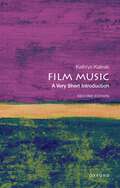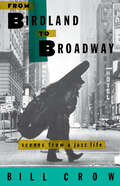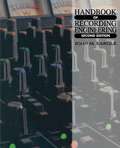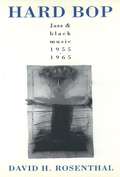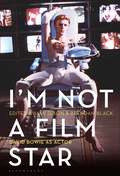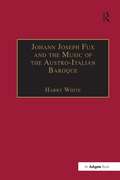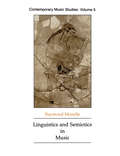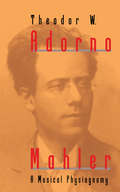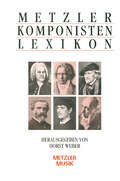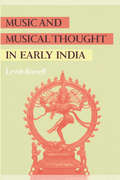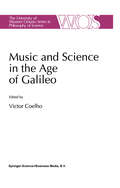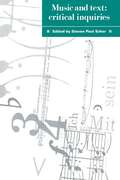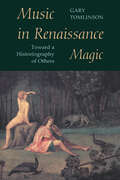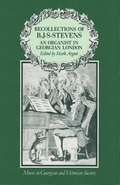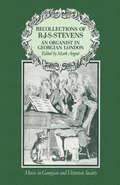- Table View
- List View
Film Music: Music And The Classical Hollywood Film (VERY SHORT INTRODUCTIONS)
by Kathryn KalinakThe rich and deeply moving sounds of film music are as old as cinema. The first projected moving images were accompanied by music through a variety of performers--from single piano players to small orchestras--that brought images to life. Film music has since become its own industry, an aesthetic platform for expressing creative visions, and a commercial vehicle for growing musical stars of all varieties. In this Very Short Introduction, Kathryn Kalinak takes readers behind the scenes to understand both the practical aspects of film music--what it is and how it is composed--and the theories that have been developed to explain why film music works. This accessible book not only entertains with the fascinating stories of the composers and performers who have shaped film music across the globe but also gives readers a broad sense of the key questions in film music studies today. The updated second edition includes the music from film industries in Africa, Asia and South Asia, and Latin America, and focuses on previously under-represented film musicians, in particular women and minority composers.
From Birdland to Broadway: Scenes from a Jazz Life
by Bill CrowIn the 1950s, New York City's Birdland was the center of the world of modern jazz--and a revelation to Bill Crow, a wet-behind-the-ears twenty-two-year-old from Washington State. Located on Broadway between 52nd and 53rd streets, the club named for the incomparable Charlie "Bird" Parker boasted lifesize photo murals of modern jazzmen like Dizzy Gillespie, Lennie Tristano, and, of course, Bird himself, looming large against jet black walls. Exotic live birds perched in cages behind the bar. The midget master of ceremonies, 3'9" Pee Wee Marquette, dressed in a zoot suit and loud tie, smoked huge cigars and screeched mispronounced introductions into the microphone. And the jazz-struck young Crow would park in the bleachers till 4 am, blissfully enveloped by the heady music of Bird, Bud Powell, Max Roach, and a host of other jazz giants. From Birdland to Broadway is an enthralling insider's account of four decades of a life in jazz. Bill Crow, journeyman bass player, superb storyteller, and author of the successful Jazz Anecdotes, here narrates many moving and delightful tales of the pioneers of modern jazz he played with and was befriended by. We find Dizzy Gillespie, with whom Crow, because of prior commitments, regretfully declined steady work, dancing at the Royal Roost, Stan Getz sadly teetering on the brink of losing himself to drugs, and Harry Belafonte (known then as "the Cinderella Gentleman") running a lunch counter in New York's Sheridan Square between music dates. And we also witness many of the highlights of Crow's career, such as in 1955 when the Marian McPartland Trio (with Crow on bass) was named "Small Group of the Year" by Metronome; Crow playing with the Gerry Mulligan Quartet at venues like Storyville in Boston and Harlem's Apollo Theater (where they appeared with Dinah Washington); and the tour of the Soviet Union with Benny Goodman, a journey that might have been a high point of Crow's travels abroad but was marred by Goodman's legendary mistreatment of his band. Moving beyond jazz clubs to the Broadway concert pit and a variety of studio gigs in the '60s, Crow encounters actors such as Yul Brynner and pop-rock acts like Simon and Garfunkel. From the great to the near-great, from Billie Holiday to Judy Holliday, Bill Crow's wealth of personal anecdotes takes the reader from Birdland, to the Half Note, to the Playboy Club, to the footlights of Broadway. This revealing book is a marvelous portrait of the jazz world, told by someone who's been there.
Handbook of Recording Engineering
by John M. EargleJohn Eargle's 4th edition of The Handbook of Recording Engineering is the latest version of his long-time classic hands-on book for aspiring recording engineers. It follows the broad outline of its predecessors, but has been completely recast for the benefit of today's training in recording and its allied arts and sciences. Digital recording and signal processing are covered in detail, as are actual studio miking and production techniques -- including the developing field of surround sound. As always, the traditional topics of basic stereo, studio acoustics, analog tape recording, and the stereo LP are covered in greater detail than you are likely to find anywhere except in archival references.This book has been completely updated with numerous new topics added and outdated material removed. Many technical descriptions are now presented in Sidebars, leaving the primary text for more general descriptions.Handbook of Recording Engineering, Fourth Edition is for students preparing for careers in audio, recording, broadcast, and motion picture sound work. It will also be useful as a handbook for professionals already in the audio workplace.
Hard Bop: Jazz and Black Music 1955-1965
by the late David H. RosenthalIt's nineteen fifty-something, in a dark, cramped, smoke-filled room. Everyone's wearing black. And on-stage a tenor is blowing his heart out, a searching, jagged saxophone journey played out against a moody, walking bass and the swish of a drummer's brushes. To a great many listeners--from African American aficionados of the period to a whole new group of fans today--this is the very embodiment of jazz. It is also quintessential hard bop. In this, the first thorough study of the subject, jazz expert and enthusiast David H. Rosenthal vividly examines the roots, traditions, explorations and permutations, personalities and recordings of a climactic period in jazz history. Beginning with hard bop's origins as an amalgam of bebop and R&B, Rosenthal narrates the growth of a movement that embraced the heavy beat and bluesy phrasing of such popular artists as Horace Silver and Cannonball Adderley; the stark, astringent, tormented music of saxophonists Jackie McLean and Tina Brooks; the gentler, more lyrical contributions of trumpeter Art Farmer, pianists Hank Jones and Tommy Flanagan, composers Benny Golson and Gigi Gryce; and such consciously experimental and truly one-of-a-kind players and composers as Andrew Hill, Sonny Rollins, John Coltrane, Thelonious Monk, and Charles Mingus. Hard bop welcomed all influences--whether Gospel, the blues, Latin rhythms, or Debussy and Ravel--into its astonishingly creative, hard-swinging orbit. Although its emphasis on expression and downright "badness" over technical virtuosity was unappreciated by critics, hard bop was the music of black neighborhoods and the last jazz movement to attract the most talented young black musicians. Fortunately, records were there to catch it all. The years between 1955 and 1965 are unrivaled in jazz history for the number of milestones on vinyl. Miles Davis's Kind of Blue, Charles Mingus's Mingus Ah Um, Thelonious Monk's Brilliant Corners, Horace Silver's Further Explorations--Rosenthal gives a perceptive cut-by-cut analysis of these and other jazz masterpieces, supplying an essential discography as well. For knowledgeable jazz-lovers and novices alike, Hard Bop is a lively, multi-dimensional, much-needed examination of the artists, the milieus, and above all the sounds of one of America's great musical epochs.
I’m Not a Film Star: David Bowie as Actor
by Ian Dixon and Brendan BlackThe first collection dedicated to David Bowie's acting career shows that his film characterisations and performance styles shift and reform as decoratively as his musical personas. Though he was described as the most influential pop artis of the 20th century, whose work became synonymous with mask, mystery, sexual excess and ch-ch-ch-changing genres, Bowie also applied his genius to the craft of acting.Bowie's considerable filmography is systematically examined in 12 scholarly essays that include tributes to Bowie's performance craft in other media forms. Classic films such as The Prestige and Merry Christmas, Mr. Lawrence, cult hits Labyrinth and The Man Who Fell To Earth, as well as lesser-known roles in The Image, Christiane F. and Broadway hit The Elephant Man are viewed, not simply through the lens of Bowie's mega-stardom, but as the work of a serious actor with inimitable talent. This compelling analysis celebrates the risk-taking intelligence and bravura of David Bowie: actor, mime, mimic and icon.
Johann Joseph Fux and the Music of the Austro-Italian Baroque
by Harry WhiteJohann Joseph Fux's reputation as a theorist and the long-term influence of his theoretical and pedagogical work have ensured that his name is widely known in music circles in the West. His pre-eminence as the foremost native-born composer of the Austrian Baroque has resulted in attention being focused on his work as an exemplum of virtually every genre, sacred or secular of Austro-Italian early eighteenth-century music. The publication of the Fux Gesamtausgabe has greatly enhanced the reputation of his music and the essays in this volume will develop our understanding of Fux, his music, and his place in musical history.
Johann Joseph Fux and the Music of the Austro-Italian Baroque
by Harry WhiteJohann Joseph Fux's reputation as a theorist and the long-term influence of his theoretical and pedagogical work have ensured that his name is widely known in music circles in the West. His pre-eminence as the foremost native-born composer of the Austrian Baroque has resulted in attention being focused on his work as an exemplum of virtually every genre, sacred or secular of Austro-Italian early eighteenth-century music. The publication of the Fux Gesamtausgabe has greatly enhanced the reputation of his music and the essays in this volume will develop our understanding of Fux, his music, and his place in musical history.
Linguistics and Semiotics in Music (Contemporary Music Studies)
by Raymond MonelleFirst Published in 1992. Routledge is an imprint of Taylor & Francis, an informa company.
Linguistics and Semiotics in Music (Contemporary Music Studies #Vol. 5)
by Raymond MonelleFirst Published in 1992. Routledge is an imprint of Taylor & Francis, an informa company.
Mahler: A Musical Physiognomy (Historia Ser.)
by Theodor W. AdornoTheodor W. Adorno goes beyond conventional thematic analysis to gain a more complete understanding of Mahler's music through his character, his social and philosophical background, and his moment in musical history. Adorno examines the composer's works as a continuous and unified development that began with his childhood response to the marches and folk tunes of his native Bohemia. Since its appearance in 1960 in German, Mahler has established itself as a classic of musical interpretation. Now available in English, the work is presented here in a translation that captures the stylistic brilliance of the original. Theodor W. Adorno (1903-69), one of the foremost members of the Frankfurt school of critical theory, studied with Alban Berg in Vienna during the late twenties, and was later the director of the Institute of Social Research at the University of Frankfurt from 1956 until his death. His works include Aesthectic Theory, Introduction to the Sociology of Music, The Jargon of Authenticity, Prism, and Philosophy of Modern Music.
Mahler: A Musical Physiognomy (Historia Ser.)
by Theodor W. AdornoTheodor W. Adorno goes beyond conventional thematic analysis to gain a more complete understanding of Mahler's music through his character, his social and philosophical background, and his moment in musical history. Adorno examines the composer's works as a continuous and unified development that began with his childhood response to the marches and folk tunes of his native Bohemia. Since its appearance in 1960 in German, Mahler has established itself as a classic of musical interpretation. Now available in English, the work is presented here in a translation that captures the stylistic brilliance of the original. Theodor W. Adorno (1903-69), one of the foremost members of the Frankfurt school of critical theory, studied with Alban Berg in Vienna during the late twenties, and was later the director of the Institute of Social Research at the University of Frankfurt from 1956 until his death. His works include Aesthectic Theory, Introduction to the Sociology of Music, The Jargon of Authenticity, Prism, and Philosophy of Modern Music.
Mahler: A Musical Physiognomy
by Theodor W. AdornoTheodor W. Adorno goes beyond conventional thematic analysis to gain a more complete understanding of Mahler's music through his character, his social and philosophical background, and his moment in musical history. Adorno examines the composer's works as a continuous and unified development that began with his childhood response to the marches and folk tunes of his native Bohemia. Since its appearance in 1960 in German, Mahler has established itself as a classic of musical interpretation. Now available in English, the work is presented here in a translation that captures the stylistic brilliance of the original. Theodor W. Adorno (1903-69), one of the foremost members of the Frankfurt school of critical theory, studied with Alban Berg in Vienna during the late twenties, and was later the director of the Institute of Social Research at the University of Frankfurt from 1956 until his death. His works include Aesthectic Theory, Introduction to the Sociology of Music, The Jargon of Authenticity, Prism, and Philosophy of Modern Music.
Mahler: A Musical Physiognomy
by Theodor W. AdornoTheodor W. Adorno goes beyond conventional thematic analysis to gain a more complete understanding of Mahler's music through his character, his social and philosophical background, and his moment in musical history. Adorno examines the composer's works as a continuous and unified development that began with his childhood response to the marches and folk tunes of his native Bohemia. Since its appearance in 1960 in German, Mahler has established itself as a classic of musical interpretation. Now available in English, the work is presented here in a translation that captures the stylistic brilliance of the original. Theodor W. Adorno (1903-69), one of the foremost members of the Frankfurt school of critical theory, studied with Alban Berg in Vienna during the late twenties, and was later the director of the Institute of Social Research at the University of Frankfurt from 1956 until his death. His works include Aesthectic Theory, Introduction to the Sociology of Music, The Jargon of Authenticity, Prism, and Philosophy of Modern Music.
Music and Musical Thought in Early India (Chicago Studies in Ethnomusicology)
by Lewis RowellOffering a broad perspective of the philosophy, theory, and aesthetics of early Indian music and musical ideology, this study makes a unique contribution to our knowledge of the ancient foundations of India's musical culture. Lewis Rowell reconstructs the tunings, scales, modes, rhythms, gestures, formal patterns, and genres of Indian music from Vedic times to the thirteenth century, presenting not so much a history as a thematic analysis and interpretation of India's magnificent musical heritage. In Indian culture, music forms an integral part of a broad framework of ideas that includes philosophy, cosmology, religion, literature, and science. Rowell works with the known theoretical treatises and the oral tradition in an effort to place the technical details of musical practice in their full cultural context. Many quotations from the original Sanskrit appear here in English translation for the first time, and the necessary technical information is presented in terms accessible to the nonspecialist. These features, combined with Rowell's glossary of Sanskrit terms and extensive bibliography, make Music and Musical Thought in Early India an excellent introduction for the general reader and an indispensable reference for ethnomusicologists, historical musicologists, music theorists, and Indologists.
Music and Musical Thought in Early India (Chicago Studies in Ethnomusicology)
by Lewis RowellOffering a broad perspective of the philosophy, theory, and aesthetics of early Indian music and musical ideology, this study makes a unique contribution to our knowledge of the ancient foundations of India's musical culture. Lewis Rowell reconstructs the tunings, scales, modes, rhythms, gestures, formal patterns, and genres of Indian music from Vedic times to the thirteenth century, presenting not so much a history as a thematic analysis and interpretation of India's magnificent musical heritage. In Indian culture, music forms an integral part of a broad framework of ideas that includes philosophy, cosmology, religion, literature, and science. Rowell works with the known theoretical treatises and the oral tradition in an effort to place the technical details of musical practice in their full cultural context. Many quotations from the original Sanskrit appear here in English translation for the first time, and the necessary technical information is presented in terms accessible to the nonspecialist. These features, combined with Rowell's glossary of Sanskrit terms and extensive bibliography, make Music and Musical Thought in Early India an excellent introduction for the general reader and an indispensable reference for ethnomusicologists, historical musicologists, music theorists, and Indologists.
Music and Musical Thought in Early India (Chicago Studies in Ethnomusicology)
by Lewis RowellOffering a broad perspective of the philosophy, theory, and aesthetics of early Indian music and musical ideology, this study makes a unique contribution to our knowledge of the ancient foundations of India's musical culture. Lewis Rowell reconstructs the tunings, scales, modes, rhythms, gestures, formal patterns, and genres of Indian music from Vedic times to the thirteenth century, presenting not so much a history as a thematic analysis and interpretation of India's magnificent musical heritage. In Indian culture, music forms an integral part of a broad framework of ideas that includes philosophy, cosmology, religion, literature, and science. Rowell works with the known theoretical treatises and the oral tradition in an effort to place the technical details of musical practice in their full cultural context. Many quotations from the original Sanskrit appear here in English translation for the first time, and the necessary technical information is presented in terms accessible to the nonspecialist. These features, combined with Rowell's glossary of Sanskrit terms and extensive bibliography, make Music and Musical Thought in Early India an excellent introduction for the general reader and an indispensable reference for ethnomusicologists, historical musicologists, music theorists, and Indologists.
Music and Musical Thought in Early India (Chicago Studies in Ethnomusicology)
by Lewis RowellOffering a broad perspective of the philosophy, theory, and aesthetics of early Indian music and musical ideology, this study makes a unique contribution to our knowledge of the ancient foundations of India's musical culture. Lewis Rowell reconstructs the tunings, scales, modes, rhythms, gestures, formal patterns, and genres of Indian music from Vedic times to the thirteenth century, presenting not so much a history as a thematic analysis and interpretation of India's magnificent musical heritage. In Indian culture, music forms an integral part of a broad framework of ideas that includes philosophy, cosmology, religion, literature, and science. Rowell works with the known theoretical treatises and the oral tradition in an effort to place the technical details of musical practice in their full cultural context. Many quotations from the original Sanskrit appear here in English translation for the first time, and the necessary technical information is presented in terms accessible to the nonspecialist. These features, combined with Rowell's glossary of Sanskrit terms and extensive bibliography, make Music and Musical Thought in Early India an excellent introduction for the general reader and an indispensable reference for ethnomusicologists, historical musicologists, music theorists, and Indologists.
Music and Musical Thought in Early India (Chicago Studies in Ethnomusicology)
by Lewis RowellOffering a broad perspective of the philosophy, theory, and aesthetics of early Indian music and musical ideology, this study makes a unique contribution to our knowledge of the ancient foundations of India's musical culture. Lewis Rowell reconstructs the tunings, scales, modes, rhythms, gestures, formal patterns, and genres of Indian music from Vedic times to the thirteenth century, presenting not so much a history as a thematic analysis and interpretation of India's magnificent musical heritage. In Indian culture, music forms an integral part of a broad framework of ideas that includes philosophy, cosmology, religion, literature, and science. Rowell works with the known theoretical treatises and the oral tradition in an effort to place the technical details of musical practice in their full cultural context. Many quotations from the original Sanskrit appear here in English translation for the first time, and the necessary technical information is presented in terms accessible to the nonspecialist. These features, combined with Rowell's glossary of Sanskrit terms and extensive bibliography, make Music and Musical Thought in Early India an excellent introduction for the general reader and an indispensable reference for ethnomusicologists, historical musicologists, music theorists, and Indologists.
Music and Musical Thought in Early India (Chicago Studies in Ethnomusicology)
by Lewis RowellOffering a broad perspective of the philosophy, theory, and aesthetics of early Indian music and musical ideology, this study makes a unique contribution to our knowledge of the ancient foundations of India's musical culture. Lewis Rowell reconstructs the tunings, scales, modes, rhythms, gestures, formal patterns, and genres of Indian music from Vedic times to the thirteenth century, presenting not so much a history as a thematic analysis and interpretation of India's magnificent musical heritage. In Indian culture, music forms an integral part of a broad framework of ideas that includes philosophy, cosmology, religion, literature, and science. Rowell works with the known theoretical treatises and the oral tradition in an effort to place the technical details of musical practice in their full cultural context. Many quotations from the original Sanskrit appear here in English translation for the first time, and the necessary technical information is presented in terms accessible to the nonspecialist. These features, combined with Rowell's glossary of Sanskrit terms and extensive bibliography, make Music and Musical Thought in Early India an excellent introduction for the general reader and an indispensable reference for ethnomusicologists, historical musicologists, music theorists, and Indologists.
Music and Science in the Age of Galileo (The Western Ontario Series in Philosophy of Science #51)
by VictorCoelhoMusic and Science in the Age of Galileo features twelve new essays by leading specialists in the fields of musicology, history of science, astronomy, philosophy, and instrument building that explore the relations between music and the scientific culture of Galileo's time. The essays take a broad historical approach towards understanding such topics as the role of music in Galileo's experiments and in the scientific revolution, the musical formation of scientists, Galileo's impact on the art and music of his time, the scientific knowledge of instrument builders, and the scientific experiments and cultural context of Galileo's father, Vincenzo Galilei. This volume opens up new areas in both musicology and the history of science, and twists together various strands of parallel work by musicians and scientists on Galileo and his time. This book will be of interest to musicologists, historians of science and those interested in interdisciplinary perspectives of the late Renaissance -- early Baroque. For its variety of approaches, it will be a valuable collection of readings for graduate students, and those seeking a more integrated approach to historical problems. The book will be of interest to historians of science, philosophers, musicologists, astronomers, and mathematicians.
Music And Text: Critical Inquiries (PDF)
by Steven Paul ScherMelopoetics, the study of the multifarious relations between music and literature, has emerged in recent years as an increasingly popular field of interdisciplinary inquiry. In this volume, noted musicologists and literary critics explore diverse topics of shared concern such as literary theory as a model for musical criticism, genre theories in literature and music, the criticism and analysis of texted music and the role of aesthetic, historical and cultural understanding in concepts of text/music convergence. These fourteen essays - united here not by a common ideology but by common subject matter - demonstrate how musical and literary scholarship can combine forces effectively on the common ground of contemporary critical theory and interpretive practice. The concluding essay by interdisciplinary historian Hayden White locates this ambitious enterprise of contemplating 'music and text' in the larger context of intellectual history.
Music in Renaissance Magic: Toward a Historiography of Others
by Gary TomlinsonMagic enjoyed a vigorous revival in sixteenth-century Europe, attaining a prestige lost for over a millennium and becoming, for some, a kind of universal philosophy. Renaissance music also suggested a form of universal knowledge through renewed interest in two ancient themes: the Pythagorean and Platonic "harmony of the celestial spheres" and the legendary effects of the music of bards like Orpheus, Arion, and David. In this climate, Renaissance philosophers drew many new and provocative connections between music and the occult sciences. In Music in Renaissance Magic, Gary Tomlinson describes some of these connections and offers a fresh view of the development of early modern thought in Italy. Raising issues essential to postmodern historiography—issues of cultural distance and our relationship to the others who inhabit our constructions of the past —Tomlinson provides a rich store of ideas for students of early modern culture, for musicologists, and for historians of philosophy, science, and religion. "A scholarly step toward a goal that many composers have aimed for: to rescue the idea of New Age Music—that music can promote spiritual well-being—from the New Ageists who have reduced it to a level of sonic wallpaper."—Kyle Gann, Village Voice "An exemplary piece of musical and intellectual history, of interest to all students of the Renaissance as well as musicologists. . . . The author deserves congratulations for introducing this new approach to the study of Renaissance music."—Peter Burke, NOTES "Gary Tomlinson's Music in Renaissance Magic: Toward a Historiography of Others examines the 'otherness' of magical cosmology. . . . [A] passionate, eloquently melancholy, and important book."—Anne Lake Prescott, Studies in English Literature
Recollections Of R. J. S. Stevens: An Organist In Georgian London (Music In Georgian And Victorian Society Ser. (PDF))
by Mark ArgentR.J.S.Stevens was an organist, composer and singer, active in late eighteenth- and early nineteenth-century London. His Recollections give a fascinating glimpse of the life of an ordinary musician as he went about his daily business serving as a church organist, singing glees - occasionally with the Prince of Wales - and teaching. They show how the events of his time bore, or failed to bear, on the lives of ordinary people, and present an entertaining insider's view of the famous musical institutions of London, including the Anacreontic Society, whose club song is now The Star-Spangled Banner, the national anthem of the USA.
Recollections of R.J.S.Stevens: An Organist in Georgian London (Music in Georgian and Victorian Society)
by Mark ArgentR.J.S.Stevens was an organist, composer and singer, active in late eighteenth- and early nineteenth-century London. His Recollections give a fascinating glimpse of the life of an ordinary musician as he went about his daily business serving as a church organist, singing glees - occasionally with the Prince of Wales - and teaching. They show how the events of his time bore, or failed to bear, on the lives of ordinary people, and present an entertaining insider's view of the famous musical institutions of London, including the Anacreontic Society, whose club song is now The Star-Spangled Banner, the national anthem of the USA.
